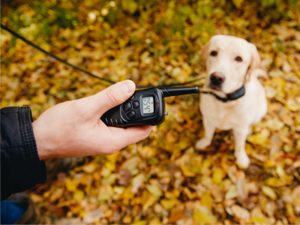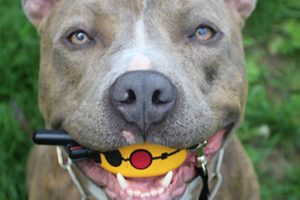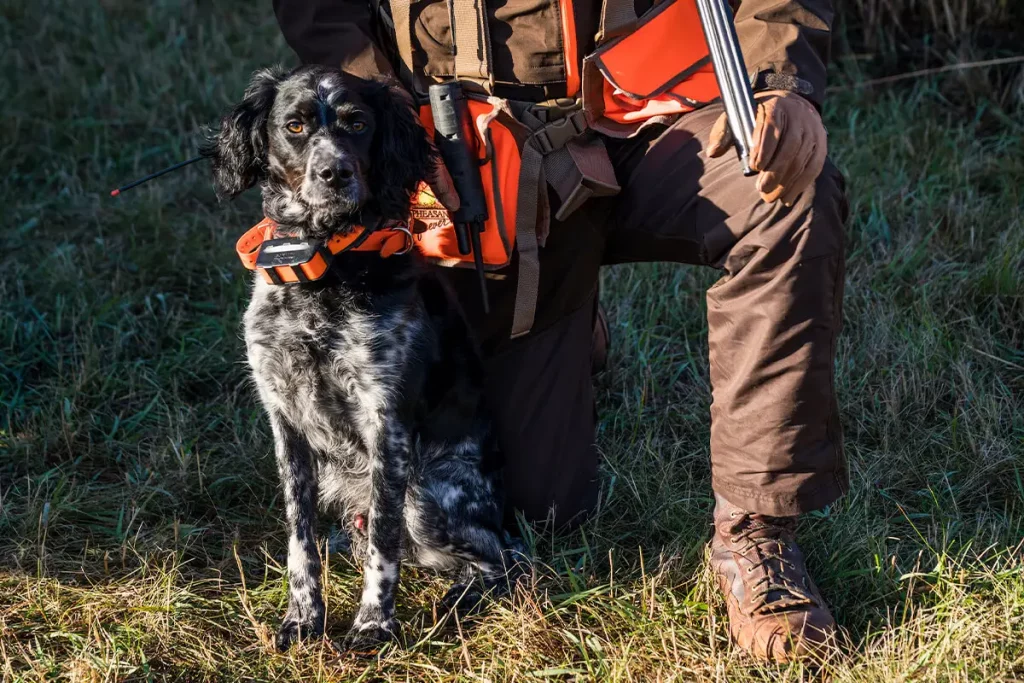A dog training collar is a device that helps train a dog by providing a remote control feedback mechanism that communicates to the dog when they have performed an undesirable behavior. The collar can be adjusted to provide varying levels of stimulation, from a mild pulsation to a more intense sensation that will get the dog’s attention. Correct usage of a dog training collar can reduce undesirable behaviors and help pet owners train their dogs successfully. In the following sections, we will explain how to use the collar, the different types of collars, types of stimulation, and best practices for dog obedience training.
Benefits Of Using A Dog Training Collar
A dog training collar is a helpful tool for pet owners who want to correct unwanted behaviors and reinforce positive behaviors in their furry friends. By using a training collar, pet owners can correct behaviors like jumping, barking, and biting, and encourage behaviors like sitting, staying, and walking on a leash.
The benefits of using a dog training collar are numerous. The collar provides a way for pet owners to correct unwanted behaviors without resorting to harmful methods like yelling or physical punishment. With the use of remote control, pet owners can deliver stimulation that is uncomfortable but not harmful, which helps correct the dog’s behavior without causing any pain.
There are different types of training collars available, each with unique features. Remote collars offer a range of settings and can be controlled remotely, making them an excellent choice for pet owners who need to correct inappropriate behaviors from a distance. Bark collars are designed to prevent a dog from barking excessively, while prong collars use pressure to discourage unwanted behavior and encourage obedience.
When using a training collar, it’s essential to understand the principle of positive reinforcement training. Positive reinforcement training is a way of encouraging specific behaviors by rewarding them with praise or treats. By using the collar and positive reinforcement training together, pet owners can effectively correct unwanted behaviors and encourage positive behaviors in their furry friends
Getting ready to utilize a dog training collar
Before using a dog training collar, it is important to prepare both yourself and your furry friend for the experience. Preparation can help ensure that your dog does not experience discomfort or pain and that you achieve the desired results without causing any harm. In this article, we will take you through the steps you should follow to prepare yourself, your dog, and the collar before using it as a training tool.

Choosing The Right Type Of Collar
When it comes to training your furry friend, using a dog-training collar can be an effective tool. However, with so many different types of collars available, it’s important to choose the right one that will match your dog’s behavior in question and the desired behavior modifications. In this guide, we will take a closer look at the different types of collars and how to choose the right one for your pet.
1. Flat Collars
Flat collars are the most basic type of collar and are commonly used for everyday wear. They are a great option for well-behaved dogs who have already mastered basic commands and are just in need of a simple identification tag. However, flat collars are not recommended for training, especially for dogs who have aggressive tendencies or pull on leashes.
2. Adjustable Collars
Adjustable collars are similar to flat collars but have an adjustable strap that can be customized to fit your dog’s neck size. They are typically made of nylon or leather and can come with different types of closures, such as a buckle or quick-release snaps. Adjustable collars are a good option for training purposes as they can provide a bit more control without being too restrictive.
3. Remote Training Collars
Remote training collars, also known as remote collars or electronic collars, are a popular choice for pet owners who want to train their pets from a distance. These collars have a handheld remote that can be used to send different forms of stimulation to the collar, including electric, vibration, scent, or sound. Remote training collars are a more advanced training tool, and it’s important to use them properly and under the guidance of a professional dog trainer.
4. Bark Collars
Bark collars are designed to curb excessive barking and can come in different forms, such as sound, vibration, or electric stimulation. These collars are usually not recommended for training and should only be used as a last resort for dogs who constantly bark.
5. Other Types of Collars
Other types of training collars include martingale collars, prong collars, pinch collars, and electric training collars. These collars are not recommended for novice pet owners and should only be used with the guidance of a professional trainer.
When choosing a training collar for your pet, consider the size and breed of your dog, as well as their sensitivity level and behavior problems. It’s important to choose a collar that matches the behavior in question and the desired behavior modifications. Look for collars that have adjustable stimulation levels so you can customize the level of stimulation your pet receives. Always make sure to read the instructions on how to use the collar properly and seek guidance from a professional dog trainer if needed.
Setting Up The Remote Control And Stimulation Levels
Setting up the remote control and stimulation levels for your dog training collar is an important step towards efficient dog training. At K9 Electronics, we promote the use of the tapping method to determine the lowest level of stimulation that will get your dog’s attention. This method involves tapping the collar’s stimulation button while placing it on your hand or arm until you feel a slight tingle. This “tingle” is the lowest level of stimulation for your dog that you should use during training.
You can adjust the precise shock levels from 1 to 16 for your dog, which guarantees that you only use the minimum amount of shock necessary for your dog’s training needs.
Our remote control dog training collar offers a variety of features to make the training process easy and comfortable for both pet owners and their dogs. The collar has an extensive range of signals transferred to the dog via radio transmission, ensuring that you can train your pet across long distances. The remote control has multiple mode options accessible at your fingertips, and two modes of operation: shock and without shock mode.
Additionally, our collar is waterproof and can withstand any weather conditions, including rain, snow, and water activities. You can now train your dog in any weather without worrying about the collar’s performance getting affected.
Familiarizing Your Dog With The Collar
Introducing a remote training collar to your furry friends can be a great way to modify their behavior and teach them basic obedience commands. However, it is crucial to introduce the collar slowly and in a positive manner to ensure that your dog associates it with positive experiences rather than punishment. Follow these steps to familiarize your dog with the collar before starting the training process.
The first step is to introduce your dog to the collar slowly. Place the collar on your dog and let them wear it for a few hours each day before starting to use it for training purposes. It will help your dog become comfortable with the collar and associate it with pleasant experiences.
During the initial phase, it is essential to ensure that your dog has positive experiences while wearing the collar. This means avoiding any training sessions or correcting behaviors using the collar. Instead, reward your dog with treats and praise for wearing the collar, and make sure they experience happy moments while wearing it.
Before introducing the collar to your dog, make sure it is correctly fitted and that your dog is comfortable. The collar should be snug but not too tight around the neck. Ensure that your dog can breathe, sit, and stand comfortably with the collar on.
Once your dog is comfortable wearing the collar, start desensitizing them to the feeling of it. Attach the leash to the collar and go for short walks in and around the house. This will help your dog become accustomed to the pulling sensation and adjust to the weight of the collar.
Using The Dog Training Collar Effectively
How to use a dog training collar? Using a dog training collar can be an excellent tool to modify a dog’s behavior and teach them basic obedience commands. However, it is crucial to use the collar effectively and responsibly. In this article, we will provide a guide on how to use the dog training collar effectively to ensure that your furry friend learns positive behavior modifications and associates the collar with positive experiences. Follow these instructions strictly to ensure successful training.

Establishing Basic Commands And Behaviors
As a responsible dog owner, it is important to establish basic commands and behaviors before using a dog training collar. Your furry friend should be able to obey at least the commands “sit”, “lie down”, “stay”, and “come” with ease. Training your dog is a crucial part of being a pet owner, and basic obedience commands are the foundation of successful dog training.
Apart from these basic commands, you must introduce your dog to voice markers and clicker training. Voice markers are verbal cue that signifies when your dog has performed a desired behavior. For example, you can say “yes” or “good boy” when your dog obeys a command like “sit”. Clicker training is another technique that enhances communication with your pet. A small handheld device emits a clicking sound when your dog performs the desired behavior, and then a treat is given as a reward.
When training your dog, positive reinforcement is key. This means rewarding your dog with treats, praise, and attention when they perform a desired behavior. Positive reinforcement is a powerful tool in dog training as it helps your dog learn what behavior is expected of them. It also strengthens the bond between you and your furry friend.
In conclusion, before using a dog training collar, it is essential to establish basic obedience commands with your furry friend. Voice markers and clicker training are also important tools to enhance communication with your dog. With consistent positive reinforcement training, your dog will learn what behavior is expected of them and you will have a well-trained and obedient pet.
Introducing Lowest Level Stimulation As Reinforcement For Actions
As a responsible dog owner and trainer, it is important to use methods that are effective, humane, and safe. This is where dog training collars come into play. In particular, the use of e-collars can be an effective way to reinforce learned behaviors and teach specific actions. However, it is important to use them correctly to avoid negative consequences and ensure success.
One of the key components of e-collar training is to introduce your dog to the lowest level of stimulation as reinforcement for actions. This means finding the level of stimulation that your dog is most responsive to without causing undue stress, discomfort, or pain. Some trainers recommend using the “Pavlovian” approach – which involves pairing the sensation of the stimulation with a positive reward or reinforcement – until your dog learns to associate the two.
Once you have determined the lowest level of stimulation that your dog responds to, it is time to begin training. It is essential to remember that e-collars should never be used to teach basic obedience commands; they are only used to reinforce learned behaviors. This means that before introducing an e-collar, your dog must have already learned the desired behavior or action through other positive reinforcement training methods.
When giving a learned command, begin with the e-collar stimulation on the lowest setting, and gradually increase it until your dog responds. The moment your dog complies with the command, stop the stimulation and reward him with praise or treats. Repeat this process, gradually increasing the intensity of the stimulation as your dog becomes more comfortable with it.
It is important to always monitor your dog’s reactions and adjust the stimulation level accordingly. Over-stimulation can lead to negative side effects such as fear, aggression, or pain. Therefore, it is crucial to observe your dog’s reactions and use the e-collar responsibly and humanely.
Adjusting Stimulation Levels As Needed
As a pet owner, it is important to understand your furry friend’s behavior to identify when adjustments may need to be made to their training collar’s stimulation levels. Some signs that may indicate the need for a stimulation adjustment include reduced responsiveness to commands, continued unwanted behaviors, or a high tolerance for the current level of stimulation.
If you have noticed any of these signs, it may be time to adjust your dog’s training collar. When doing so, it is essential to keep in mind your dog’s age, size, and temperament, as these factors may influence their response to changes in stimulation levels.
To begin adjusting the stimulation level, it is recommended to start with a gradual increase and observe your dog’s reaction. By slowly increasing the level, it allows your dog to adjust to the new intensity, reducing the chances of causing them any unnecessary discomfort or stress.
It is crucial to never exceed the appropriate level of stimulation when making adjustments, as this could potentially cause your dog emotional or physical harm. Always remember that a dog training collar is meant to be a training tool and should never be used to punish or harm your furry friend.
If you are unsure about adjusting the stimulation levels on your own, it is always a wise idea to consult with a professional dog trainer. These experts can provide personalized advice on how to effectively use your dog’s training collar and modify undesirable behaviors.
When it comes to adjusting stimulation levels on a dog training collar, it is essential to carefully observe your dog’s behavior and make gradual adjustments while keeping their age, size, and temperament in mind. Always remember that the safety and well-being of your furry friend should be your top priority, and consulting with a professional dog trainer can be helpful when in doubt.
Avoiding Over-Stimulation, Shock, And Abuse
When using a dog training collar, it is crucial to avoid over-stimulation, shock, and abuse. The primary purpose of the collar is to reinforce positive behavior, not to punish. Ensuring your dog’s safety and comfort is of utmost importance. Here are some tips on avoiding over-stimulation, shock, and abuse when using a dog training collar:
1. Start with the lowest stimulation level: When you initially start using the collar, always begin with the lowest stimulation level. This allows your dog to adjust and ensures that you do not cause any unnecessary discomfort or stress.
2. Gradually increase the stimulation level: As your dog gets accustomed to the collar, you may need to increase the stimulation level as necessary. It is important to monitor your dog’s reaction and adjust the stimulation level accordingly.
3. Monitor your dog’s reaction: Always keep an eye on your dog’s reaction to the collar. If you notice any sudden changes in behavior, such as fear or distress, immediately discontinue the use of the collar and seek the advice of a professional dog trainer.
4. Use the collar for short periods: It is recommended to use the collar for short periods and avoid leaving it on for an extended period. This helps to prevent any overstimulation, shock, or abuse.
5. Consult with a professional dog trainer: If you are unsure about how to use the collar effectively or humanely, it is always a wise idea to seek the advice of a professional dog trainer. They can provide personalized advice on how to use the collar safely and humanely and also help modify any undesirable behaviors.
Avoiding over-stimulation, shock, and abuse when using a dog training collar is vital for your dog’s safety and comfort. Always start with the lowest stimulation level, gradually increase it as needed, monitor your dog’s reaction, use the collar for short periods, and seek the advice of a professional dog trainer if necessary.
Conclusion
In conclusion, positive reinforcement and responsible training methods should always be prioritized in dog training, with the use of dog training collars being one potential tool to help achieve these goals. By prioritizing positive reinforcement and responsible training methods, you can help your dog become a well-behaved and happy member of your family.

